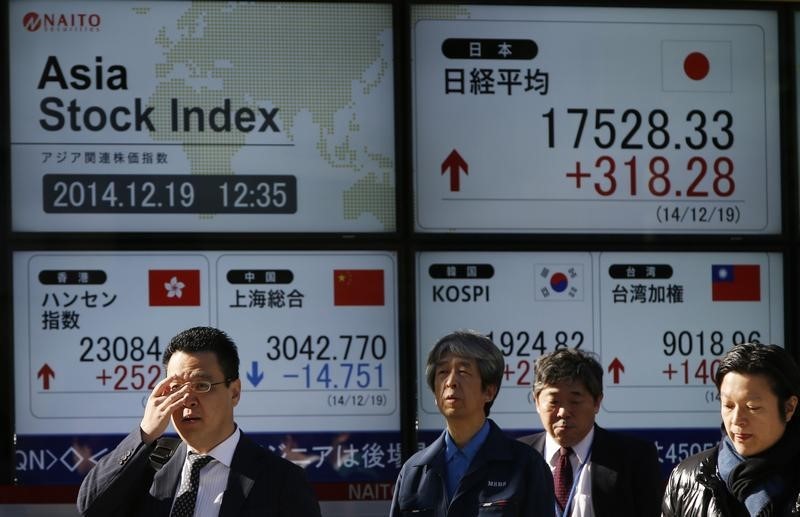Select Language

Most Asian stock markets climbed on Friday, led by Japan, as a new U.S.-UK trade deal framework sparked hopes for tariff negotiations with other countries, especially China.
Investors also assessed China’s monthly trade balance data to assess the impact of hefty U.S. tariffs.
Moreover, regional markets took cues from major Wall Street indexes, which gained overnight on trade deal optimism.
U.S. stock index futures were largely muted in Asian trading on Friday.
Nikkei jumps over 1% as US-UK trade deal stokes broader optimism
President Donald Trump on Thursday signed a framework for a trade deal with the United Kingdom, under which the 10% tariff imposed on goods imported from the UK remains in place, while the UK agreed to lower its tariffs to 1.8% from 5.1%. Moreover, steel and aluminum imports to the U.S. would be exempt from Trump’s 25% levy.
Trump also said he expects substantive negotiations between the U.S. and China. Officials from both counties were set to meet over the weekend for trade talks.
Soon after the announcement, Commerce Secretary Howard Lutnick said in media interviews that the U.S. plans dozens of trade deals soon but will likely keep a universal 10% tariff.
Most Asian stocks cheered these signs of easing global trade tensions.
Japan’s Nikkei 225 index jumped 1.5%, while TOPIX advanced 1.3%. A weaker yen against the dollar also provided support.
South Korea’s KOSPI was largely unchanged, while the Philippines’ PSEi Composite index jumped 1%.
Australia’s S&P/ASX 200 rose 0.5%, and Singapore’s Straits Times index added 0.6%.
India’s Nifty 50 Futures edged 0.2% higher amid escalating geopolitical tensions with neighboring Pakistan.
India said it neutralized Pakistani drone and missile attacks on military sites, including Jammu, Pathankot, and Udhampur on Thursday night, calling it an escalation in tensions.
China shares edge lower despite resilient trade balance data
China’s Shanghai Composite index fell 0.3%, while the Shanghai Shenzhen CSI 300 declined 0.4%.
Hong Kong’s Hang Seng index also lost 0.4%.
Data on Friday showed that the Chinese trade balance grew slightly below expectations in April.
Exports fell to 8.1% from 12.4% a month ago, but were sharply above forecasts of a 1.9% rise.
Meanwhile, the decline in imports narrowed to 0.2%, from 4.3%, and beat analysts’ estimates of a 5.9% slump.
The data showed resilient domestic demand and foreign demand despite tariff headwinds. The figures were also likely supported by mutual tariff exemptions on key goods like electronics.
Investors now await the country’s consumer price index (CPI) inflation data, scheduled for release on Saturday.

